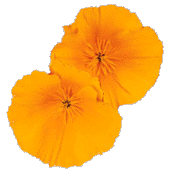Here are the exact Raiza Creme© ingredients:
Vitamin E: This is in all the expensive cremes.
Malpighia glabra: An herb used for depression, rich in vitamin C.
Aloe vera: contains enzymes, polysaccharides and skin nutrients which exhibit antibacterial and antifungal action. It also has a natural sunscreen effect.
Papaver rhoeas: acts as an emollient and a soothing agent.
Vitis vinifera: contains vitamins and minerals, which are claimed to nourish the skin. It is found in the high priced cremes (over $200.00/oz.)
Bovine Placenta: Collagen is extracted. Many studies confirm use in skin care. [Don't have a cow! Bovine placenta is a perfectly natural by-product of live and healthy bovine births.]
Panthenol: Stimulates cellular proliferation and definitely aids in tissue repair. Studies indicate that, when topically applied, panthenol penetrates the skin and is converted into pantothenic acid, a B complex vitamin. That is why it is called Pro-Vitamin B5. This action can influence the skin’s natural resources of pantothenic acid.
Methylparaben: Colorless, odorless. Active against yeast and fungi
Propylparaben: A totally inert preservative
Green tea: Laboratory studies show it rich in Vitamins E & C and contains a powerful antioxidant, catechin, believed to help control aging.
Retinol®: is pure and active Vitamin A. Another well known, synthetic form of Vitamin A is tretinoin, better known as Retin-A®. Vitamin A is one of the few substances with a small enough molecular structure to penetrate the outer layers of the skin and work to repair the lower layers of the skin where collagen and elastin reside. This allows it to repair and stimulate collagen and elastin, creating firmer, smoother skin.
Safflower oil
Almond oil
SPF-15 sunscreenContains no petroleum distillates which are potentially very harmful to the skin. These are usually found in products which do diminish wrinkles overnight. Petroleum distillates are a temporary fix as the wrinkles return within 24 hours.
